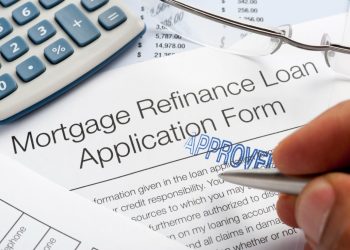 (MCT)—The federal government on Tuesday announced the nitty-gritty details of its revamped refinancing program to help homeowners who are current on their loans but can’t take advantage of low interest rates because they owe more on their homes than they are worth.
(MCT)—The federal government on Tuesday announced the nitty-gritty details of its revamped refinancing program to help homeowners who are current on their loans but can’t take advantage of low interest rates because they owe more on their homes than they are worth.
The Federal Housing Finance Agency acknowledged that the 894,000 mortgages refinanced under the Home Affordable Refinance Program had not lived up to the Obama administration’s expectations.
The reworked effort certainly will attract the attention of homeowners in hard-hit housing markets. But not every consumer with an upside-down mortgage will qualify, and it remains to be seen how many mortgage lenders will participate.
Q: Who may be eligible?
A: The program is only eligible to borrowers whose loans are owned or guaranteed by Fannie Mae or Freddie Mac and who have 20 percent or less equity in their homes. To check if either Fannie or Freddie backs a mortgage, go to http://www.freddiemac.com/mymortgageor http://w www.fanniemae.com/loanlookup. The only loans eligible are those that were backed by Fannie Mae and Freddie Mac before May 31, 2009.
Q: When can applications be submitted, and when does the program end?
A: The program begins Dec. 1 but some participating lenders may not be ready to take applications that soon. The program ends Dec. 31, 2013.
Q: Can borrowers apply at any lender?
A: Yes. Participation is voluntary for lenders, but one key component of the reworked program is designed to make lenders more comfortable with writing a new loan on an underwater property. Going forward, a HARP lender is not considered responsible if a loan it refinances goes bad because of mistakes in the original purchase loan. The change was considered critical to attracting lenders to the program and fostering competition among lenders for business. However, lenders still have underwriting guidelines to follow.
Q: What if I missed one mortgage payment?
A: The agencies don’t want to see any delinquencies in the most recent six months, but a borrower can be 30 days late on one payment in months seven to 12 of the past year.
Q: What kind of extra fees are tacked onto the loans?
A: For loans that amortize in 20 years or less, all fees related to the riskiness of the loan have been eliminated. For loans that amortize in more than 20 years, fees are capped at 0.75 percent of the loan amount.
Q: What are the maximum loan-to-value ratios?
A: For 30-year, fixed-rate loans, there is no maximum LTV ratio. For fixed-rate loans of more than 30 years and less than 40 years, the maximum LTV is 105 percent.
The maximum also is 105 percent for adjustable-rate loans with an initial fixed period of 5 years or more and terms up to 40 years.
Q: Can a borrower refinance from a 30-year to a shorter-term loan, even if it means increasing the monthly payments?
A: Yes. In fact, the government is encouraging that because interest rates are usually lower on shorter-term loans and it allows the borrower to increase equity in their homes at a faster rate.
But to qualify for a shorter-term loan under the program, the borrower has to meet additional criteria, like having a credit score of at least 620 and must have a debt-to-income ratio of no more than 45 percent.
Q: Can lenders solicit my business?
A: Yes. If lenders advertise the program to potentially eligible borrowers with loan-to-value ratios of 80 percent or more, they have to advertise it for both Fannie and Freddie-backed loans.
©2011 the Chicago Tribune










